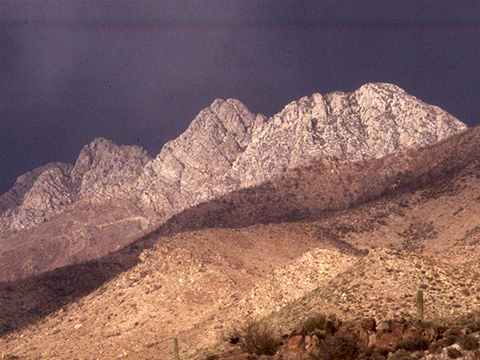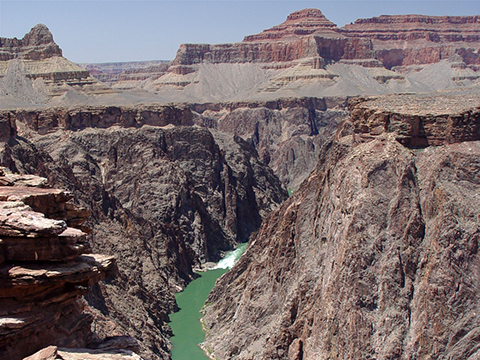Prelude
Metamorphic rocks have experienced changes due to heat, pressure and/or fluids deep inside the Earth. The word metamorphic is derived from Greek and means "of changed form". Metamorphic rocks have experienced changes due to heat, pressure and/or fluids deep inside the Earth. An original or pre-existing rock can transform into a totally new metamorphic rock, and the composition of the original rock and the intensity of the metamorphism determine how much the rock will change. Sometimes new minerals (like garnet) or even new layering can form in the metamorphic rocks. All of these changes occur at depth, and only after the rocks are uplifted and exposed at the surface can a metamorphic petrologist study them.
|
Figure 8-1. Metamorphic rocks in Arizona. Highly resistant quartzite of Four Peaks in the Mazatzal Mountains northeast of Phoenix (left). Remember to click on the highlighted images to see larger versions. |
|
What Will You Do Today?
|
Describe, identify, and interpret different types of metamorphic rocks and their parent compositions, as well as read geologic maps and cross sections that include metamorphic rocks |
A. Types of Metamorphism - Review the various types of metamorphism
B. Identifying & Interpreting Metamorphic Rocks - Describe and classify common metamorphic rocks
C. Metamorphic Rocks in Geologic Maps - Use the Geologic Map of Arizona and the Geologic Map of the Phoenix Mountains to interpret metamorphic units
D. Geology of Quartzite Canyon - Decipher a twisted sequence diagram. You should be getting very good at these!


